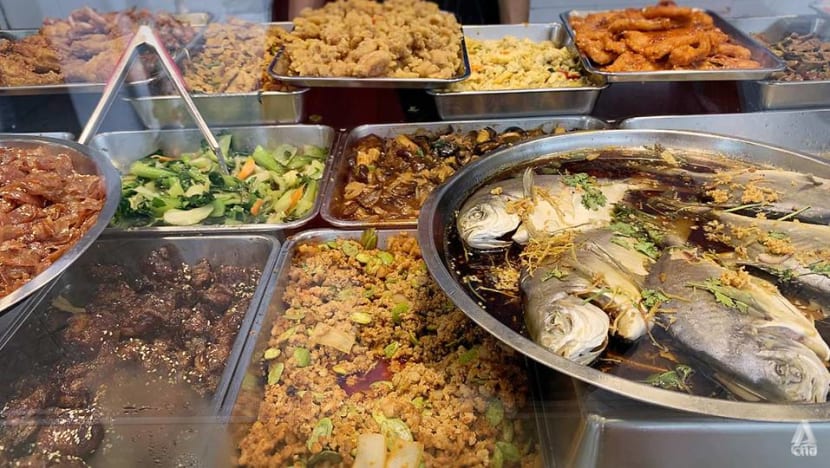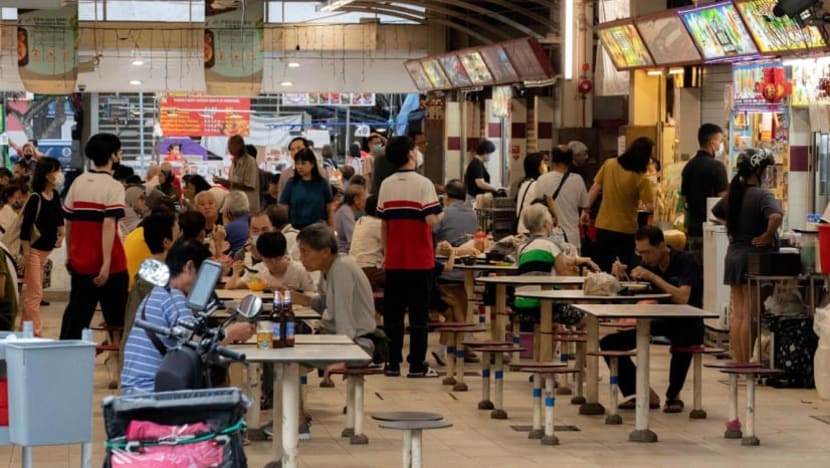Commentary: There’s a simple fix to online ruckus about economy rice prices
Economy rice is expected to be affordable, especially amid inflation and rising cost of living. There’s a simple way for hawkers and customers to avoid the rude shocks of unexpectedly expensive "cai fan", says Singapore University of Social Sciences’ Lau Kong Cheen.

SINGAPORE: It probably won’t earn any Michelin accolades or top online food rankings, but you can’t go wrong with economy rice. Cai fan, also called mixed vegetable rice, is one of the most reliable meals in Singapore.
With a wide variety of cooked dishes displayed that customers can simply point to, it is convenient for busy people to have a quick and satisfying meal. Above all, with economy in its name, it’s known - and expected - to be affordable.
So every now and then, dissatisfied customers take to social media in a tizzy and some economy rice stalls draw flak for their prices, especially amid high inflation and the rising cost of living.
In one incident posted on online forum Reddit, one customer was incredulous that a plate of rice with one meat and two vegetable dishes cost S$5.70. Another disgruntled customer claimed on Facebook that he had been charged S$5 and S$9 for the same meal at the same stall on different days.
Though nasi padang is generally accepted as being more expensive than economy rice, netizens have also cried foul, such as one who was unexpectedly charged S$24 for a meal that included fish roe.
On the other hand, economy rice stalls in Bedok and Hougang have been applauded for keeping prices at S$2 for a plate with three dishes. Such a large discrepancy in market prices has not gone unnoticed in today’s digital age.

DON’T ORDER THE FISH?
We’re familiar with some reasons commonly cited to account for the rise in prices: The increasing costs of fresh food, worker salaries and rent, as well as the impact of the recent 1 percentage point hike in the Goods and Services Tax (GST). But do these adequately justify the price increases of economy rice?
Inflation has certainly driven up the prices of everything. The consumer price index of hawker food went up by as much as 8.3 per cent in January 2023 compared with January 2022.
The Department of Statistics Singapore indicated the average retail price for economy rice (one meat, two vegetables) as S$3.74 in January 2023 - this might be closer to what most customers pay compared to the anecdotal high prices that some rant about online.
Then again, not all dishes are equal. When netizens complain about economy rice prices, a common response is to avoid ordering fish. Fish prices are generally higher and have risen rather drastically beyond the inflation index. It was reported that prices of various types of fish escalated by about S$5 to S$10 per kg at the beginning of 2023. This may have led to the varied pricing experienced by some customers.
Labour costs will continue to rise with the implementation of the Progressive Wage Model which was rolled out from Mar 1 for the food services sector. Some economy rice operators may already have raised prices to pre-empt the pay increases.
MAKE PRICING CLEARER
If the common issues people have with economy rice are unexpectedly high and inconsistent prices, does it boil down to better communication and managing expectations?
Not being clearly informed of the price prior to selecting their dishes may trigger a sense of being cheated once the bill is rung up. And many may feel obliged to pay and avoid the embarrassment of a public row.
Here are two suggestions. First, communicate prices clearly. Most of these stalls currently do not display the prices of the variety of dishes, or worse show outdated pricing on their signage.
Economy rice stallholders can address with some basic colour coding, such as using pegs of different colours on each tray on display, just like what is already practised in conveyor belt sushi restaurants with colour-coded plates or salad bars with some spectrum from basic to premium toppings.
Customers can refer to the colour legend with corresponding prices, with dishes more influenced by seasonal or dynamic market pricing (such as fish and seafood) indicated by a more specific “price of the day” or “ask the food server” instruction.
Such a practice could also address customers’ unhappiness about being charged for a meat dish for a selection they thought was a vegetable dish.
CUSTOMERS UNDERSTAND HAWKERS CANNOT ABSORB ALL PRICE SHOCKS
Second, customer service training can be useful. Some may scoff at the idea that hawker stalls need customer service training. But economy rice stalls are said to face a high attrition rate of workers.
As such, new workers may not be familiar with the ordering process and interactions customers have come to expect, and may come across as rude. Some of the economy rice chains have introduced training such as video recordings of the entire standard operating procedure of serving their customers and other tips on communicating effectively.
Though there may be some black sheep who intentionally are out to scalp customers, many of us recognise the pains inflicted by global inflation and understand that hawkers cannot absorb all the price shocks on their end. Hopefully, taking practical steps that are not too costly to implement can help reduce misunderstandings and rude shocks around price disputes.
Lau Kong Cheen is an associate professor of the marketing programme at Singapore University of Social Sciences’ (SUSS) School of Business.



















